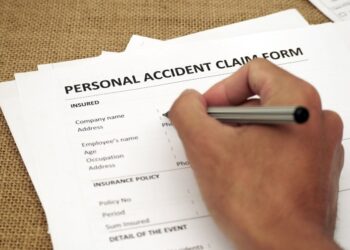When you plan or promise to do something, it may become your duty. However, it is not a breach of duty to forget to wash the toilet or honor an invitation to dinner from a legal perspective. Legally, a duty is an obligation to do or not to do something. For instance, you have a duty not to murder and a duty to pay your taxes. Hence, it becomes an offense to breach these duties.
It is negligence when a breach of duty injures someone. A car accident is an example of such a violation of duty, resulting in devastating consequences for those affected. In such situations, it’s best to consult an experienced attorney as soon as possible, like Rustin Smith of Smith Hulsey Law. Meanwhile, this article discusses the concept of breach of duty and its application in negligence issues.
A Duty of Care
Typically, a duty of care is a legal responsibility that you owe someone else to show reasonable control when doing something that could predictably cause injuries or harm. Despite the simplicity of this definition, “reasonable” and “predictable” or “foreseeable” are central points of disagreement in a negligence case. People have a duty of care in numerous instances.
For instance, a storeowner has a duty of care to keep their sidewalk clean and dry to ensure customers do not fall. An accountant has a duty to prepare accurate tax returns. A physician has a duty of care to meet the standard of care that a patient’s condition requires. From these examples, it is clear that a duty of care only occurs when there is a relationship that propels it. For example, your accountant has no duty of care to help you manage your health, while your physician has no duty of care to help you manage your finances.
Connection Between the Parties
A contract, statute, or situation can warrant a duty of care. Below are the different instances where a duty of care exists:
- The accused played a prominent role in creating the danger that harmed the plaintiff. For example, a store owner leaves their sidewalk slippery, causing a patron to fall.
- The accused volunteered to protect the plaintiff from injury. For instance, a drunk volunteer firefighter drops the individual they are salvaging from a burning structure.
- The defendant knew or should have been aware that their actions would injure the plaintiff. For example, a motorist hits a pedestrian while driving without their lights on.
- The defendant and the plaintiff had a business deal, like a guest and innkeeper, or a voluntary relationship, like an individual who calls the public into their property.
Statutes, Rules and Regulations
There are different standards and interpretations of relevant statutes and laws because every state has unique negligence and breach of duty laws. For instance, some states and jurisdictions have statutes that specify the steps needed as part of a duty of care. A state may have a law specifying specific individuals or entities’ steps. For instance, most states have rules and regulations for explosive manufacturers to protect the community.
Understanding Breach of Duty
Violation of duty occurs when there is a duty of care that you failed to follow. Breach of duty is a crucial component of negligence matters. For instance, you have a duty of care not to drive under the influence of alcohol and to drive under the speed limit. It becomes an offense to violate these duties.
Reasonable Person Standard
The “reasonable person standard” is the objective standard of care that applies under common law. A reasonable individual is a person with reasonable or logical caution who avoids actions likely to injure themselves or others. If a logical individual would have acted more cautiously than the defendant did, the defendant probably violated their duty in most civil cases.
When a Breach of Duty Constitutes Negligence
Negligence is the outcome of the breach of duty. Foreseeability is the only needed test to create a duty of care in some states. If a jury finds the harm foreseeable, the defendant acted negligently. Hence, it is predictable that deciding to drive drunk will lead to a car mishap. So, you are negligent if you decide to drink and drive. Most states rely on a multifactor analysis to assess the existence of a duty of care, but the common factors include:
- The severity of the potential harm
- The cost and likelihood of selecting an alternative to the given action
- The need to demotivate future injury or harm
- The proximity between the action and the harm
After establishing a duty of care, you will have to determine whether the defendant breached the duty and apply a test to identify negligence. Focus on these elements to know if there is negligence in a breach of duty:
- The accused owed a responsibility of care to an individual.
- The defendant violated the duty of care.
- The violation caused harm to the plaintiff.
- The injury led to damages.
Violation of Duty in a Strict Liability Matter
Negligence cases are civil matters such as medical malpractice, personal injury, and product liability. However, strict liability can also involve a breach of duty. Strict liability violates an absolute duty to make an item safe. The different categories of strict liability cases include:
- Product Liability: It is a situation where a defendant’s defective product injures a plaintiff.
- Dangerous Animals: A defendant was responsible for or owned the dangerous animal that harmed the plaintiff.
- Unduly Dangerous Incidents: The defendant partook in obviously dangerous activities, like storing dynamite in their house.
In a strict liability matter, there is no reasonable person standard or test of what the accused knew. The defendant is liable for the injury or harm that happened. One of the most typical examples of strict liability involves keeping highly dangerous animals. If you own a lion and it escapes and injures someone, you are liable; it does not matter if you were negligent. Owning the lion has established your liability.
Defenses to Breach of Duty
The central defense to a breach of duty claim is establishing that the defendant had no duty of care toward the plaintiff. Hence, they are not responsible for the resultant harm. However, the reasonable person standard means you have the duty of care to act logically and cautiously always. A plausible defense for this is claiming that the plaintiff assumed the risk or danger.
When individuals assume the danger, they are responsible for any harm from the incident. This assumption effectively relieves potential defendants of any duty they owe the victim. The plaintiff was aware of the consequences and accepted them verbally or through their actions. For example, it is an assumption of risk to sign a release before going skydiving. It is also an assumption of risk to walk into an arena with a clear inscription of “Danger: Poisonous Reptiles Within. Do Not Enter.”
Comparative and Contributory Negligence
You can defend negligence charges by proving that the plaintiff also acted negligently. However, it depends on the negligence law in your state. Contributory, comparative, and modified comparative negligence are the three negligence standards in the United States. For comparative negligence, the court determines the percentage of each party’s guilt to award damages. But for states practicing modified negligence standards, a plaintiff can only recover damages if they have less than 50 percent fault.
Contributory negligence states are few. They do not award damages to plaintiffs who share in the blame. It means that a plaintiff cannot recover anything if the defendant proves they were one percent responsible for the harm. This standard seems harsh, which is why many states do not use it.
Conclusion
The concept of “breach of duty” plays a major role in matters pertaining to negligence in a court of law. By understanding the duties and consulting an experienced legal professional, you can safeguard yourself and others from accidents caused by your negligence. Those who have been injured due to someone else’s negligence can also hold them accountable and seek reparation for their suffering by establishing the same.










